There’s something magical about a shady corner in the garden — a place that feels cool and calm, almost secretive. But if you’ve ever tried planting there, you’ve probably noticed how tricky it can be to find plants that thrive without constant sunshine. I used to think ornamental grasses were only for sun-drenched spots, waving gracefully in the breeze. Then I discovered a handful that actually prefer the soft glow of dappled light or full shade — and my garden hasn’t looked the same since.
Shade-loving ornamental grasses bring more than just greenery. They add texture, movement, and contrast to those darker parts of the yard that often go unnoticed. Some spill gracefully over rocks, others brighten up the base of trees, and a few even bloom with feathery plumes that dance in the wind. If you’ve got a spot that feels a little too gloomy, these grasses might be the perfect way to give it new life.
In this guide, I’ll share 14 stunning ornamental grasses that don’t just tolerate shade — they thrive in it. Each one brings a unique texture and character to the landscape, from soft, flowing clumps to bold, colorful blades that glow in low light. Let’s explore how these plants can transform your shaded garden into a vibrant retreat.
The Beauty of Shade-Loving Ornamental Grasses
One of the biggest joys of gardening is creating contrast — soft next to structured, dark against bright. Shade-loving ornamental grasses excel at this. Their fine textures and graceful forms add instant sophistication to low-light areas. A dull, shady border can suddenly become a layered, flowing space full of life and subtle color.
These grasses are also wonderfully low-maintenance. Once they settle into the soil, they don’t demand much beyond the basics — an occasional watering, a bit of compost, and some seasonal trimming. Many varieties are hardy, pest-resistant, and tolerant of a wide range of soils. That means you get beauty without the constant babysitting.
Beyond aesthetics, these grasses have a practical side. Their root systems help stabilize soil, making them ideal for erosion-prone spots or sloped areas under trees. They also provide excellent ground cover, filling those tricky spaces where flowering plants struggle to survive. So, they’re as functional as they are beautiful.
14 Shade-Loving Ornamental Grasses
1. Japanese Forest Grass (Hakonechloa macra)
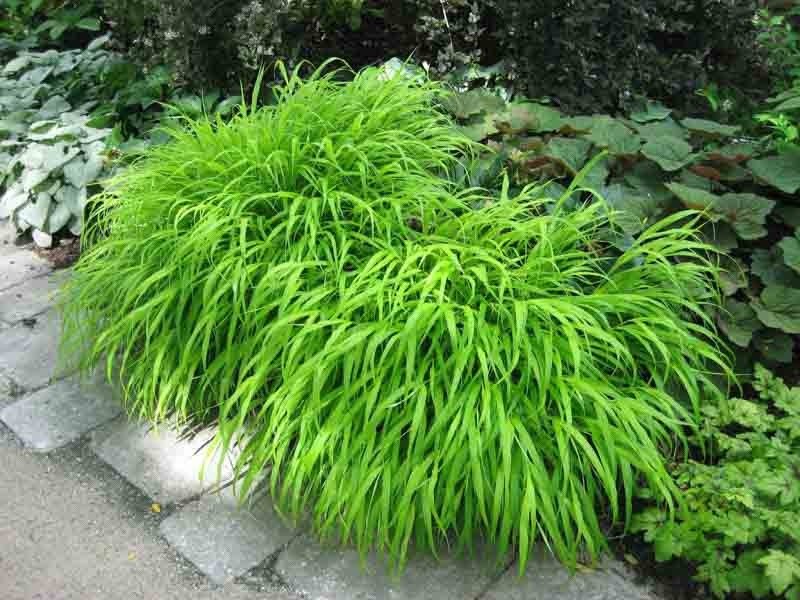
This elegant grass feels like it was made for shade gardens. Its arching, bamboo-like blades ripple in shades of gold and lime green, giving a soft, cascading effect. It’s one of those plants that makes a shady area look alive, even without flowers.
Japanese Forest Grass thrives in partial to full shade and prefers rich, moist, well-drained soil. It does best in a sheltered spot where it can stay cool and moist throughout the summer. I love using it to edge paths or to spill gracefully over stones — it’s like a gentle waterfall of color.
Try pairing it with hostas or ferns to create a layered look. The way its golden tones catch even the faintest light is truly stunning — especially in the early morning or evening when the sun is low.
2. Tufted Hair Grass (Deschampsia cespitosa)

Tufted Hair Grass brings a light, airy touch to shady areas. Its fine green leaves form neat mounds topped with delicate golden plumes that shimmer when they catch the light. It’s graceful yet understated — perfect for naturalistic gardens or woodland edges.
This grass enjoys partial shade and cool, moist soil. It’s hardy and can even tolerate colder climates, making it a great addition for northern gardens. Once established, it requires little attention, just an occasional trimming to remove old foliage.
In a landscape, Tufted Hair Grass looks best planted in groups. The feathery plumes seem to dance on their own in the breeze, adding gentle motion to still garden corners.
3. Northern Sea Oats (Chasmanthium latifolium)
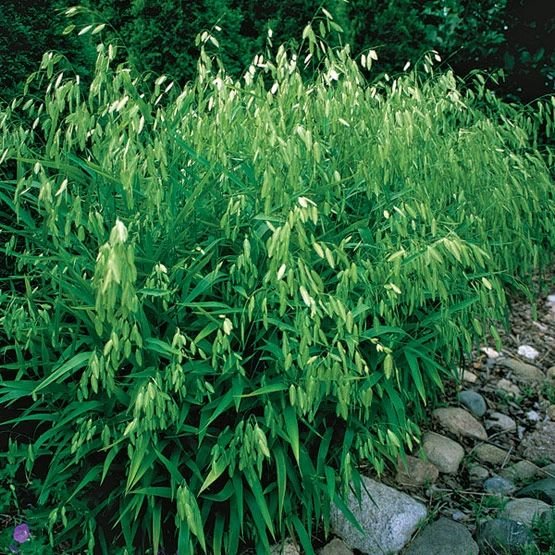
Northern Sea Oats is easily recognizable by its flat, dangling seed heads that resemble tiny fish scales. They sway beautifully in the wind and take on warm bronze tones in fall, adding long-lasting interest.
This grass prefers part shade but can handle more sunlight in cooler climates. It adapts to a variety of soils, though it appreciates consistent moisture. I like using it along borders or woodland paths where the light filters through the trees — the seed heads glow in that kind of light.
It also makes a lovely addition to dried arrangements. Just be mindful that it can self-seed if left unchecked, so trimming before seeds drop helps maintain control.
4. Japanese Sedge (Carex morrowii ‘Ice Dance’)

If you want year-round texture, Japanese Sedge is your friend. Its glossy green leaves edged in white stay evergreen in many climates, giving constant color through all seasons.
It thrives in deep shade and moist, well-drained soil, making it perfect for planting beneath trees or along shady foundations. It slowly spreads, forming dense mats that look lush and polished.
I’ve used ‘Ice Dance’ as a ground cover near shaded stone paths, and it never disappoints. The variegation really brightens dark corners and pairs beautifully with darker-leaved plants like heucheras.
5. Variegated Liriope (Liriope muscari ‘Variegata’)
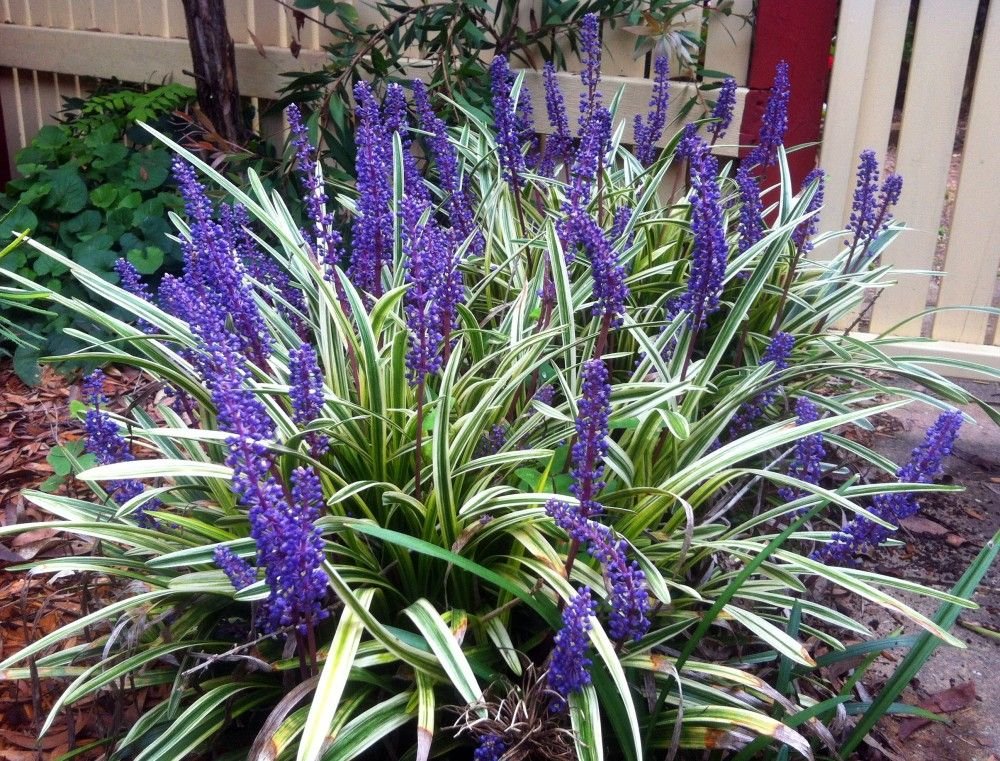
Liriope, or “monkey grass,” is often underrated. This plant produces neat clumps of grass-like foliage accented by purple flower spikes in late summer. The variegated variety, with creamy yellow stripes, lights up shady areas like little beacons.
It thrives in partial to full shade and tolerates poor soil, drought, and foot traffic — it’s truly resilient. Once planted, it practically takes care of itself.
Use Liriope as a border along walkways or as filler between shrubs. Its tidy shape and cheerful color make it one of the easiest ways to add brightness to shade gardens.
6. Sweet Flag (Acorus gramineus)

Sweet Flag adds structure and fragrance to shady spots. Its sword-like leaves stand upright, adding a clean vertical element. Some varieties have a lovely lemony scent when brushed or crushed.
This grass thrives in moist to wet soil, so it’s perfect for planting near ponds, rain gardens, or other damp areas. It handles shade well but can tolerate partial sunlight.
In my garden, I’ve used Sweet Flag to line a shaded water feature. It gives the area a calm, balanced look, and its fresh green color blends beautifully with surrounding ferns and hostas.
7. Palm Sedge (Carex muskingumensis)
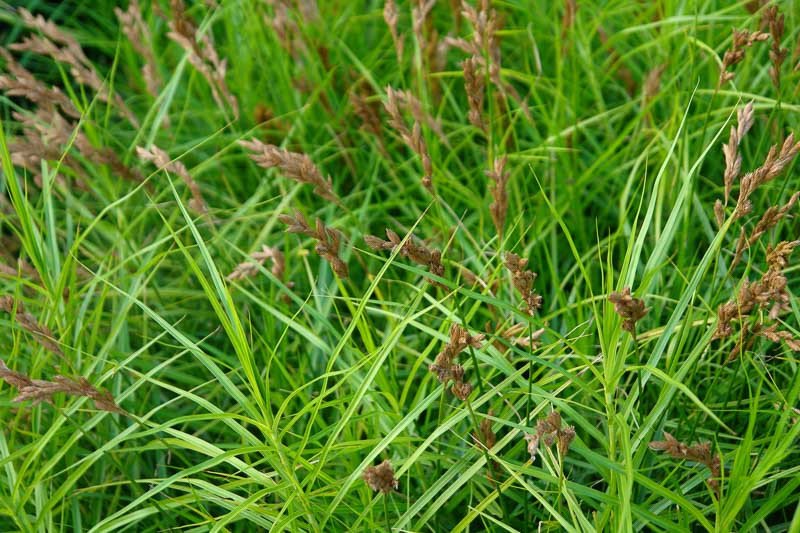
Palm Sedge brings a tropical twist to shaded gardens. Its bright green leaves fan out in a palm-like pattern, forming dense, upright clumps that look lush and vibrant.
It prefers partial shade and consistently moist soil. Because it grows well in wet conditions, it’s a great choice for rain gardens or low-lying areas.
Palm Sedge pairs wonderfully with moisture-loving plants like astilbes and ligularias. Its structure adds height and texture without overwhelming nearby plants.
8. Bowles’ Golden Sedge (Carex elata ‘Aurea’)
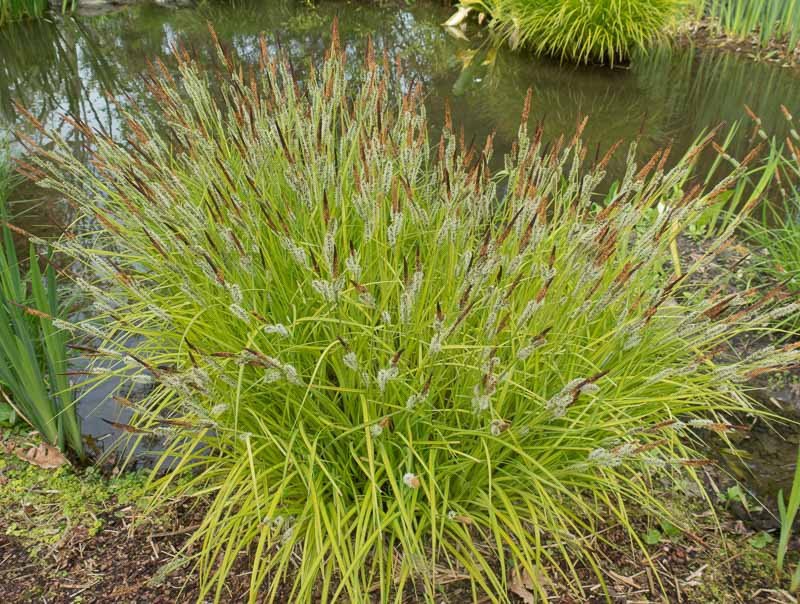
If you want color that truly stands out, Bowles’ Golden Sedge delivers. Its yellow-green blades practically glow in the shade, bringing warmth to darker corners.
It thrives in damp, shady spots and even grows well along the edges of ponds or streams. Its upright, arching form makes it a beautiful companion for deep green or burgundy foliage.
A cluster of this grass can transform a shadowy patch into a bright focal point. I like planting it alongside hostas and bleeding hearts for a mix of texture and color contrast.
9. Autumn Moor Grass (Sesleria autumnalis)

Autumn Moor Grass offers a tidy, compact look with soft green tufts and silvery flower spikes in late summer. It’s subtle but adds an elegant touch to shaded borders or pathways.
This grass prefers partial shade and well-drained soil. It’s drought-tolerant once established, making it a low-maintenance choice for busy gardeners.
In mass plantings, Autumn Moor Grass forms a soothing, uniform carpet that complements bolder perennials or shrubs. Its silvery spikes catch the light just enough to draw the eye.
10. Korean Feather Reed Grass (Calamagrostis brachytricha)
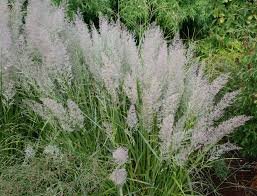
This ornamental grass adds both height and drama to the shade. Its tall plumes emerge pinkish and fade to silvery beige, lasting well into winter.
Korean Feather Reed Grass enjoys partial shade and moist soil but is adaptable to different conditions. It provides structure and movement, especially when planted in groups.
It’s particularly stunning in late summer when the feathery plumes shimmer in low light. I love watching it sway with the breeze — it adds rhythm to an otherwise still garden.
11. Blue Wood Sedge (Carex flaccosperma)
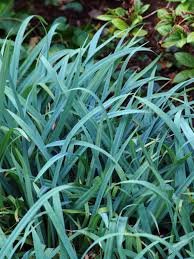
Blue Wood Sedge has soft, blue-green leaves that bring a calm, cool tone to shaded spots. It’s understated yet beautiful, perfect for natural-style plantings.
It grows well in full shade and moist soil, forming gentle mounds that blend seamlessly with woodland settings. This grass doesn’t demand attention but quietly enhances everything around it.
I often use it as a low ground cover under trees or shrubs. Its blue hues contrast nicely with the deep greens typical of shady areas.
12. Evergold Sedge (Carex oshimensis ‘Evergold’)
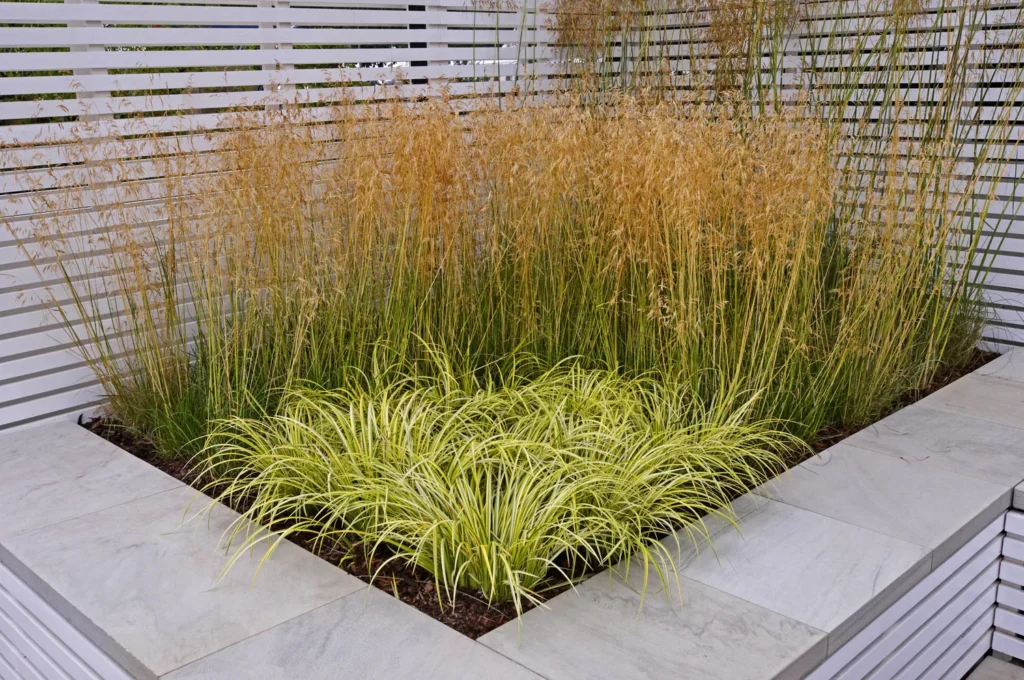
Evergold Sedge is one of the most cheerful shade grasses you can grow. Its creamy yellow centers with dark green edges instantly brighten up dull corners.
It thrives in part to full shade and tolerates a variety of soils. It’s also great in containers, making it versatile for patios or small spaces.
Plant it along shaded paths or in decorative pots — it pairs wonderfully with trailing ivy or compact ferns for a polished, elegant look.
13. Greater Woodrush (Luzula sylvatica)

Greater Woodrush brings a woodland charm with its broad, glossy leaves and soft brown flower clusters. It looks lush and natural, perfect for wild or shaded garden settings.
This hardy grass tolerates heavy shade and poorer soils better than many other species. Once established, it needs little care, just occasional thinning.
Use it to fill shaded slopes or to edge forest pathways. Its gentle movement and rich color make it feel like a natural part of the landscape.
14. Appalachian Sedge (Carex appalachica)
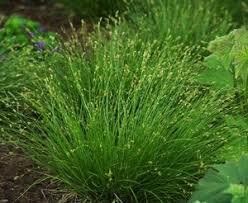
Delicate and fine-textured, Appalachian Sedge forms soft, flowing tufts that resemble wisps of green hair. It’s one of the best choices for dry shade — a challenging condition many plants dislike.
It grows beautifully beneath trees or along woodland paths. Its graceful form gives the impression of a soft green carpet, especially when planted in masses.
This grass pairs well with shade perennials or spring bulbs, offering year-round texture and a sense of quiet movement.
Design Tips for Using Ornamental Grasses in Shade
To get the best from shade-loving grasses, think in layers. Mix fine-textured varieties like Appalachian Sedge with broader-leaved ones such as Japanese Forest Grass. The contrast makes the space feel more dynamic.
Color is another key element. Variegated and golden grasses, like Evergold Sedge or Bowles’ Golden Sedge, help brighten low-light areas. Their light-reflecting tones act like natural highlights in darker corners.
Finally, don’t be afraid to mix grasses with other shade-tolerant plants. Pairing them with hostas, ferns, or hellebores creates a rich, textured display that feels both lush and balanced.
Maintaining Shade-Loving Grasses
Most ornamental grasses are low-maintenance, but they appreciate a little seasonal care. Keep soil moist — especially for sedges and moisture-loving types — and add compost each spring to refresh nutrients.
Cut back old foliage in early spring before new growth emerges. This keeps the clumps neat and encourages fresh, healthy shoots.
Every few years, divide larger grasses to prevent overcrowding and maintain vigor. This not only keeps your plants happy but also gives you more to spread around the garden.
Final Thoughts
Shady areas don’t have to be problem spots in your garden. With the right ornamental grasses, they can become your most inviting spaces — soft, textured, and full of quiet beauty. These plants prove that even without bright blooms or endless sunlight, your garden can thrive with elegance and movement.
Over time, I’ve learned that shade gardens have their own kind of magic. They’re peaceful, calming, and a little mysterious. Once you plant a few of these grasses, you’ll start to see how they transform dim corners into glowing, living landscapes that draw you in again and again.

